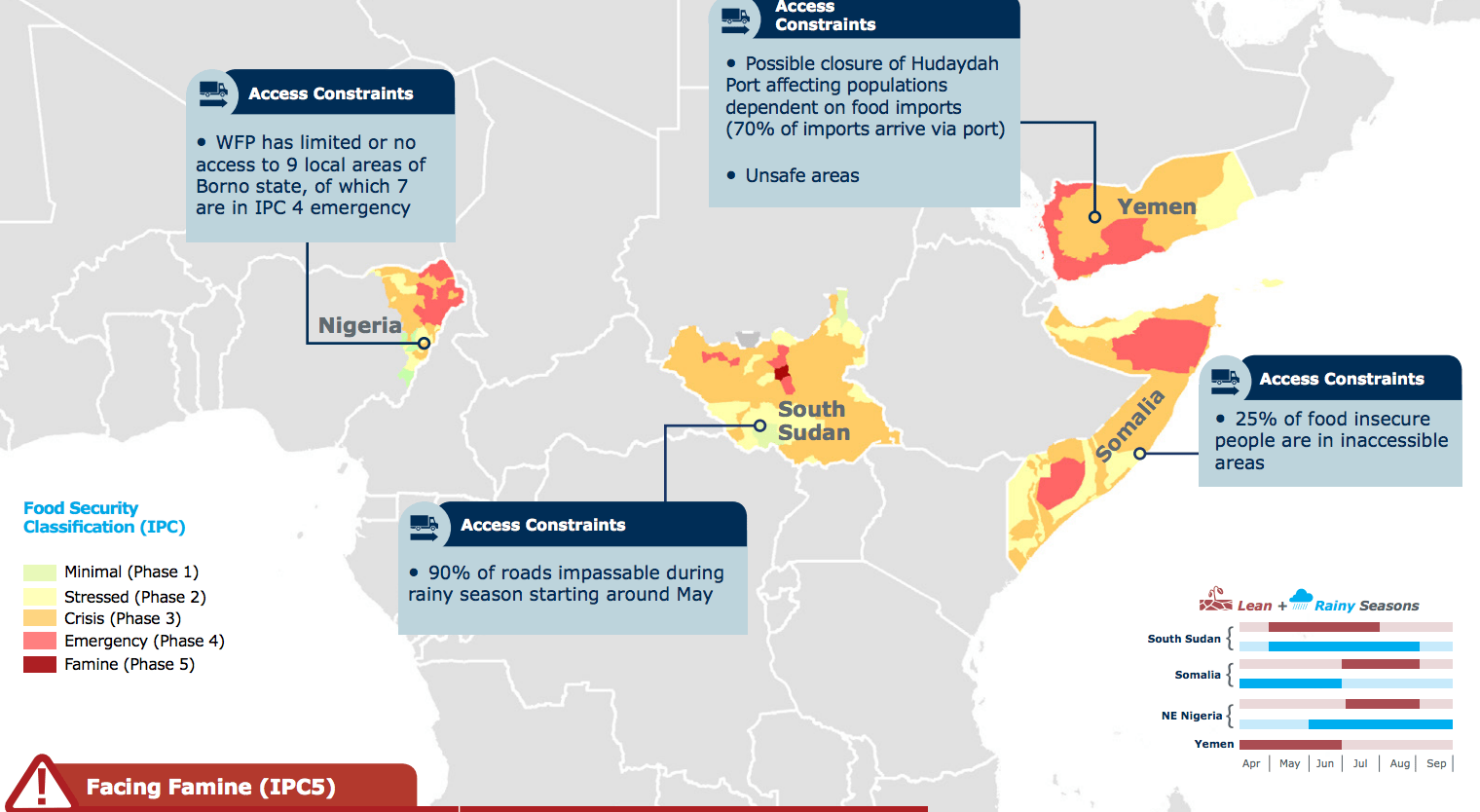The statistics are only getting worse.
Nearly 20 million people across four countries are currently at risk of famine. This includes 1.6 million children who are already considered “severely malnourished.” If food does not arrive soon, the numbers of deaths across Yemen, South Sudan, Somalia and northern Nigeria will soon begin to skyrocket. The world may stumble into the worst mass death event since World War Two.
When food shortages cross the threshold to famine, things get very deadly, very quickly.
The last declared famine, in Somalia in 2011, caused over 260,000 deaths in a span of just a few months. When famine hits, people start dying in the kinds of numbers that have society-wide implications. This chart, from an academic study looking at the death toll from the 2011 Somalia famine, shows in stark terms just how fast death rates accelerate during famines.


What is different this time around is that the international community has already sounded the alarm — and activated some rapid response mechanisms to mitigate the scale of this disaster. This is particularly true for Somalia. “Famine was declared July 2011. Half of people who died, died before that,” says the WFP’s Husain. “This time around, we are better funded and have better access.” He estimates thats some 50,000 people in Somalia would already have died if not for the current response.
But the ability of the international community to keep this up is seriously in question. The World Food Program needs $961 million through September. It has only received 26% of that so far. Without funding, there is no way to stop these crises from descending into full fledged famines.
The United States is the single largest donor, contributing about $400 million to the cause. More is needed. “Traditionally, we are hoping and expecting more money [from the United States],” says Reena Ghelani, Deputy Director, Coordination and Response Division, UN Office for the Coordination of Humanitarian Affairs (OCHA).
Another part of the problem is humanitarian access. “Each of these crises are unique, but they all have one thing in common: conflict,” says Ghelani. It is exceedingly difficult for the World Food Program to operate in places where access to roads and ports are hindered. In Yemen, for example, the number of people WFP is able to reach is directly tied to one port, through which 70% of all food into Yemen in imported. Fighting and other disruptions have routinely slowed or shut operations at that port.
In remote parts of South Sudan roads are often too insecure so the WFP must resort to airdrops, which are orders of magnitude more expensive than traditional land deliveries.
